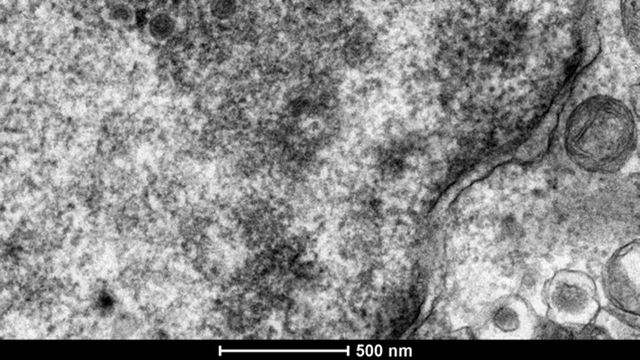Trending News
News

News
Using Ancient DNA To Uncover How a Chicken Virus Evolved To Become More Deadly
An international team of scientists led by geneticists and disease biologists from the University of Oxford and LMU Munich have used ancient DNA to trace the evolution of Marek's Disease Virus (MDV).

News
Advanced Microscopy Technique Investigates How Skin Layers Are Bound Together
Species throughout the animal kingdom feature vital interfaces between the outermost layers of their bodies and the environment. Intricate microscopic structures are known to assemble in matrix patterns.

News
One Step Closer to a System That Can Detect Any Virus
A new study has validated the use of a new system that can detect any virus that could potentially infect humans, bringing it one step closer to use in viral surveillance and diagnosis.

News
Mapping the Measle Mutations That Help It Spread in the Human Brain
Mayo Clinic researchers mapped how the measles virus mutated and spread in the brain of a person who succumbed to a rare, lethal brain disease.

News
Octopus DNA Drives Concern for Rising Sea Levels
Scientists have used octopus DNA to discover that the West Antarctic Ice Sheet (WAIS) likely collapsed during the Last Interglacial period around 120,000 years ago – when global temperatures were similar to today.

News
Revealing Relatives in Ancient DNA With Unprecedented Precision
A newly developed tool enables researchers to identify prehistoric and historic individuals' relatives up to the sixth degree, such as second to third cousins.

News
How Do Poison Frogs Store Their Toxin Without Harming Themselves?
A newly identified protein helps poison dart frogs accumulate and store a potent toxin in their skin which they use for self-defence against predators.

News
Scientists Engineer Bacteria To Make Two Valuable Products From Plant Fiber
Scientists have engineered bacteria to make a key ingredient of plastics and a carotenoid used in pharmaceuticals simultaneously, from an underutilized plant fiber.

News
Researchers Are “CReATiNG” Synthetic Chromosomes Faster and Cheaper
A new technique to clone and reassemble DNA, dubbed CReATiNG, could simplify and lower the cost of making synthetic chromosomes. Potential applications are numerous, including pharmaceutical production, biofuel generation, and cancer therapies.

News
Plants Use “Trojan Horse” To Fight Mold Invasions
UC Riverside scientists have discovered a stealth molecular weapon that plants use to attack the cells of invading gray mold.
Advertisement




